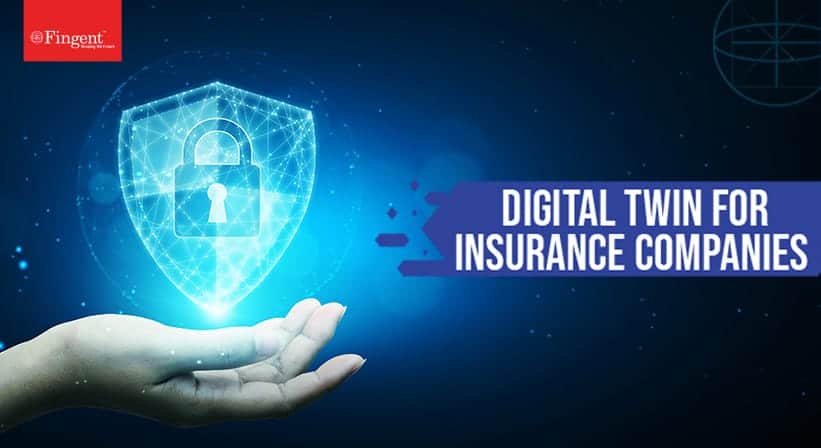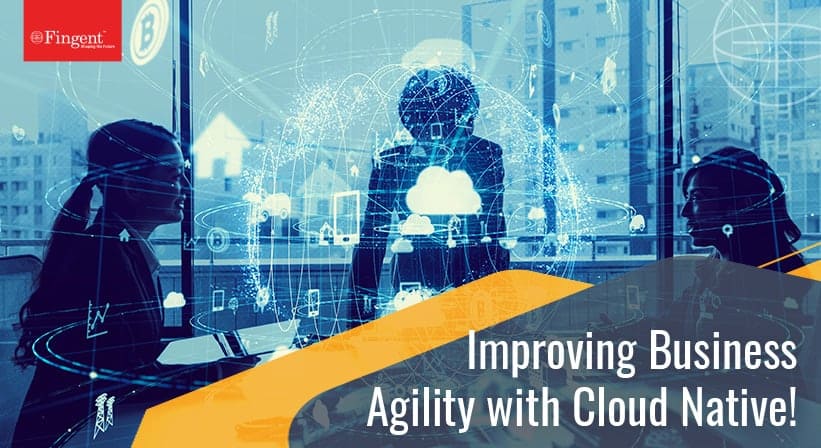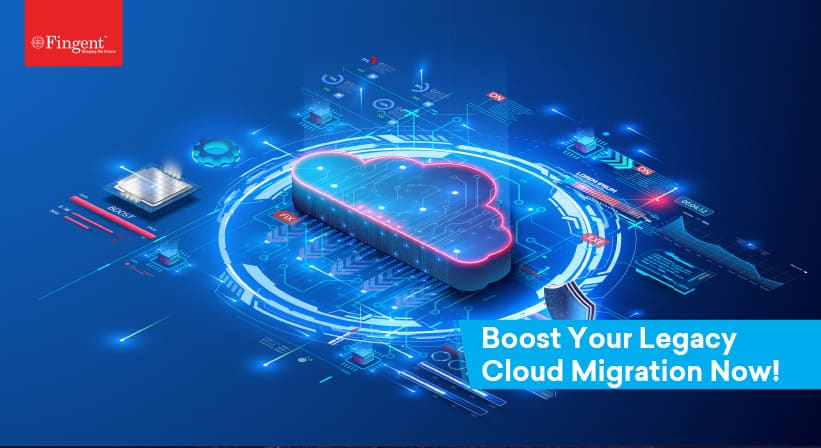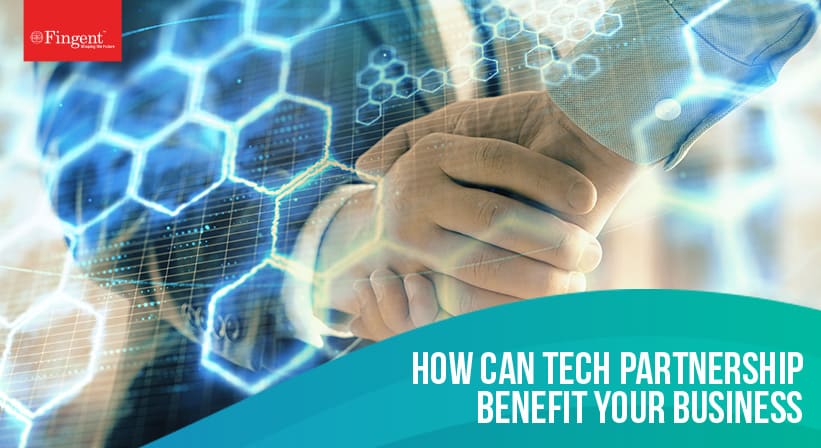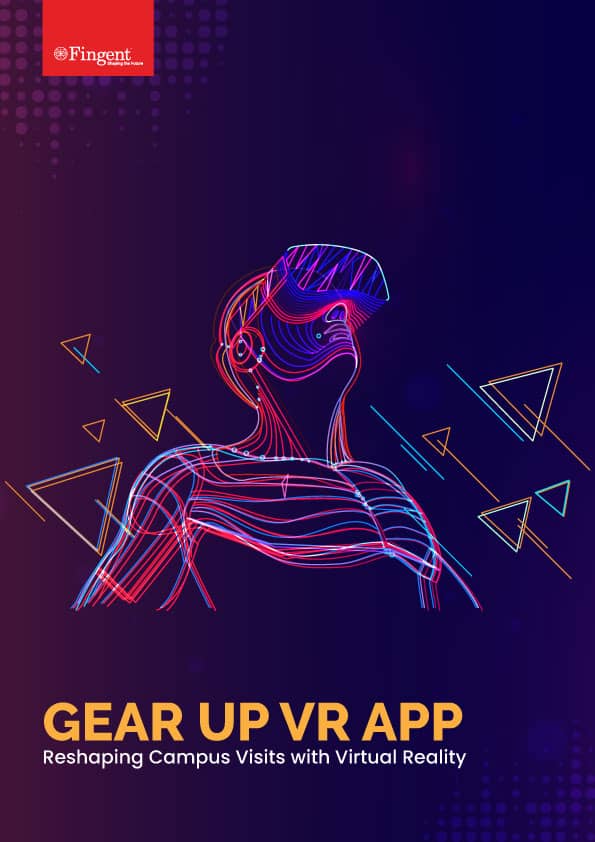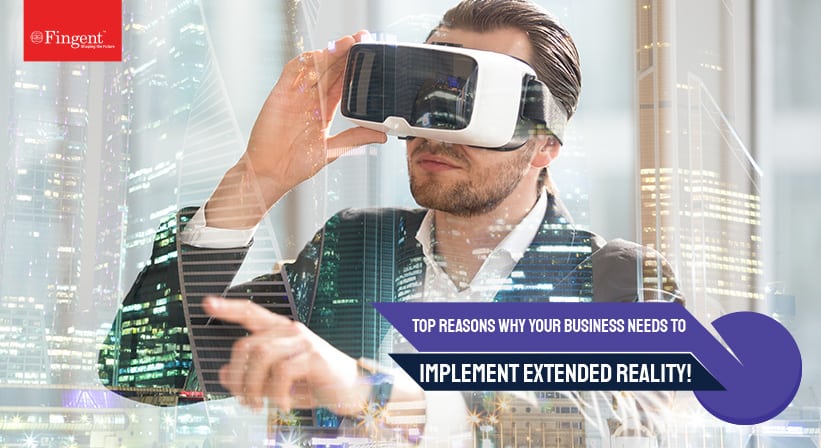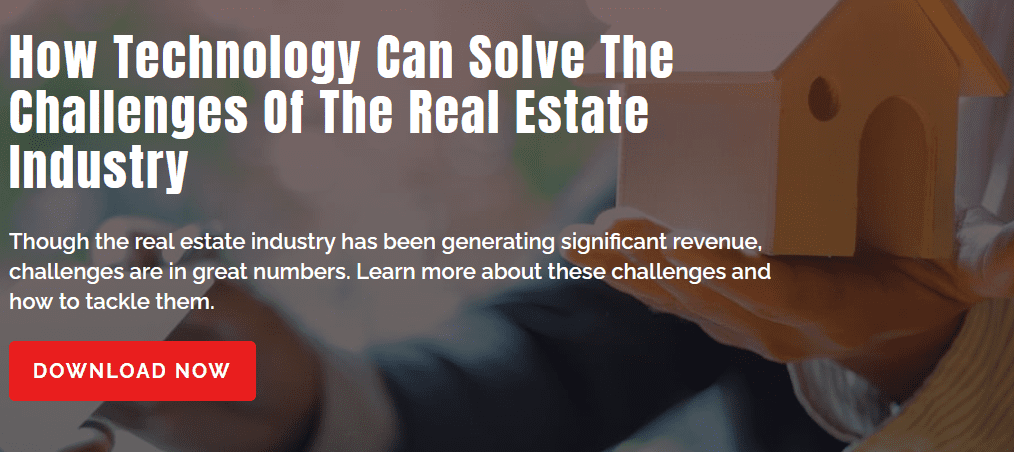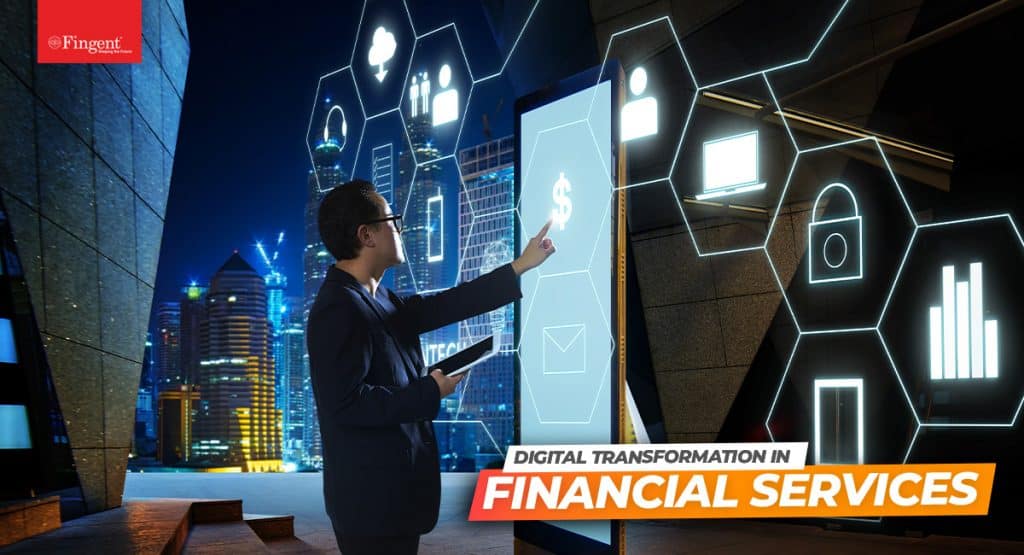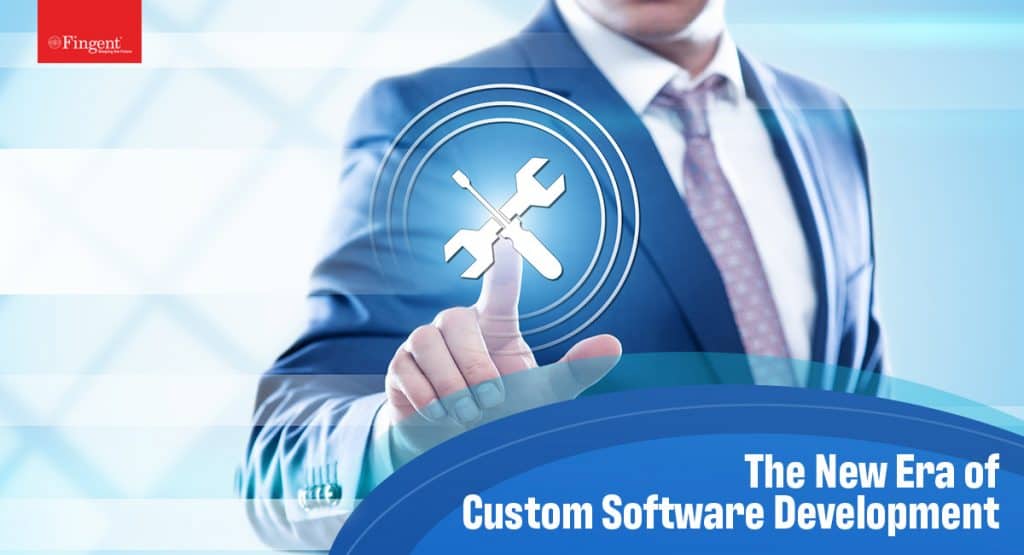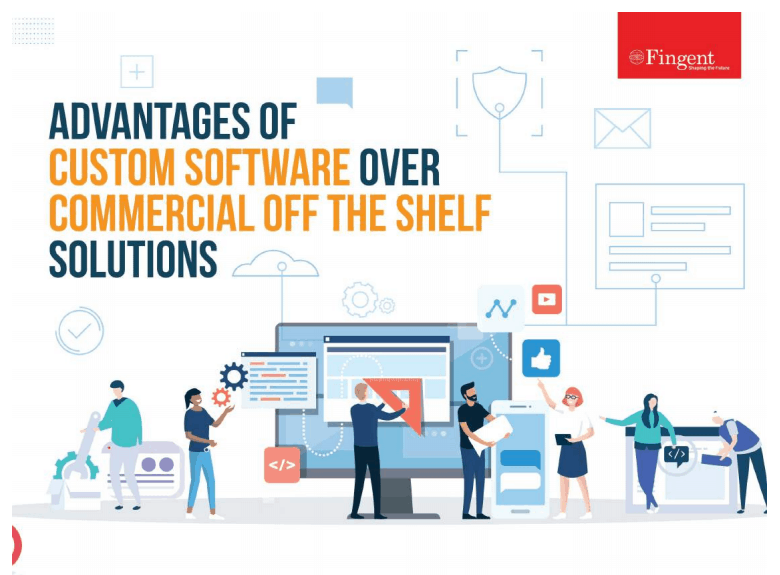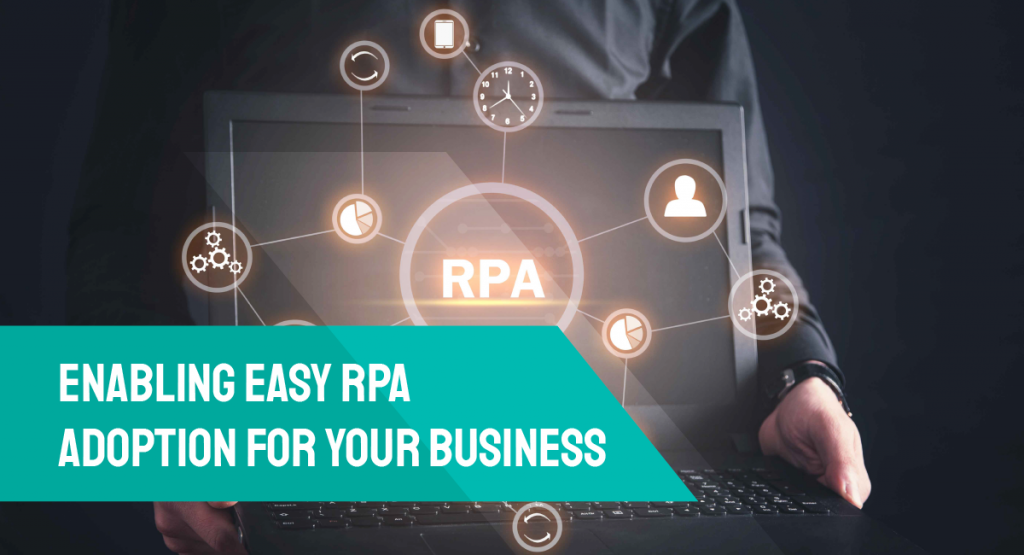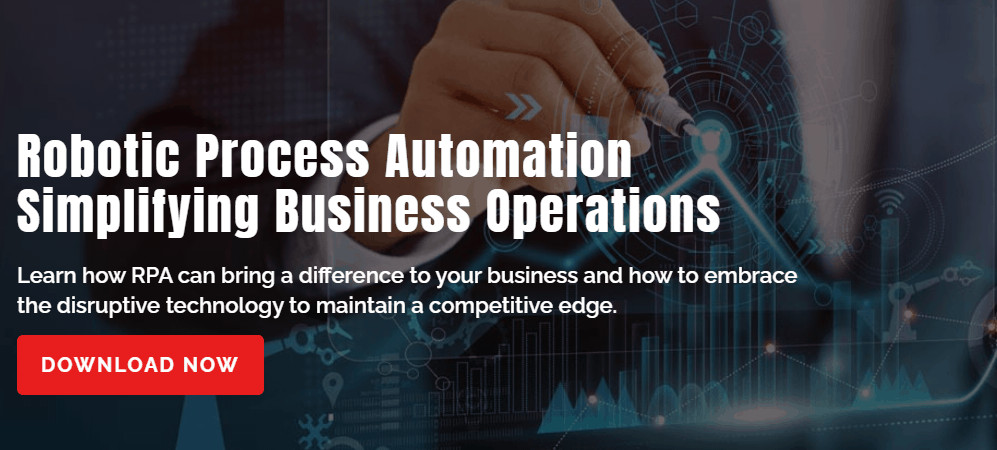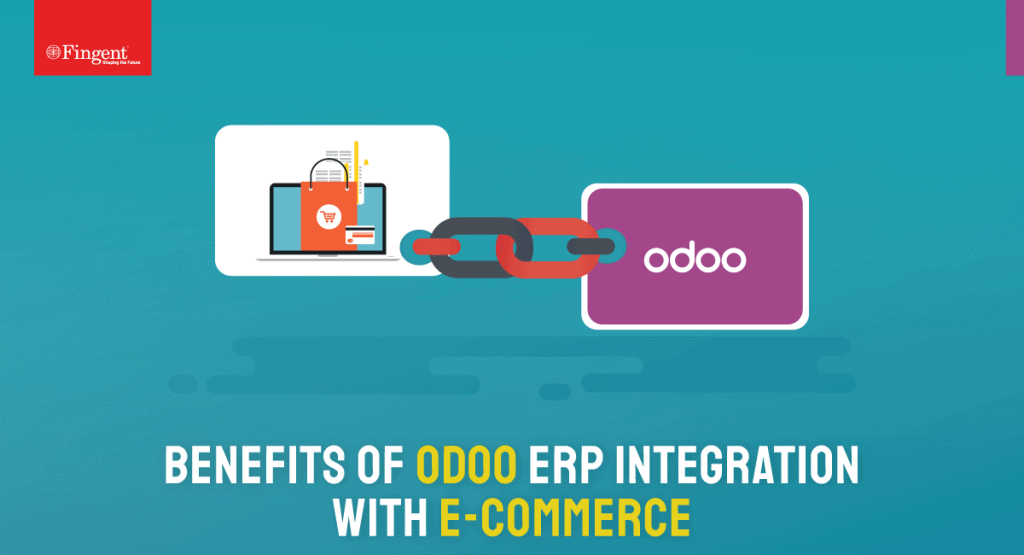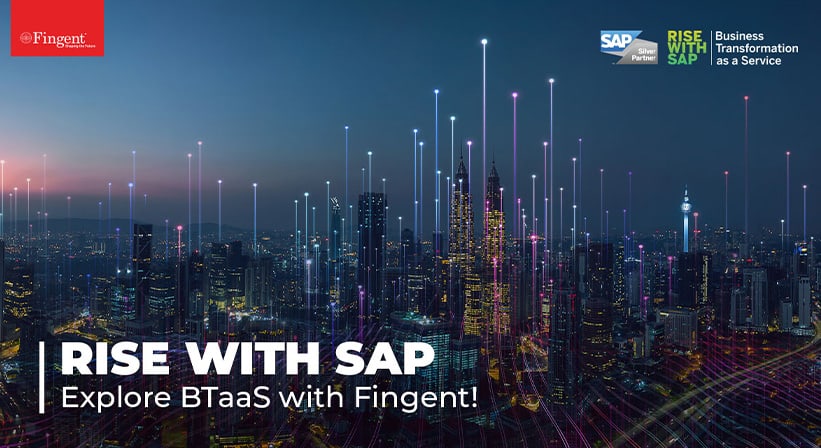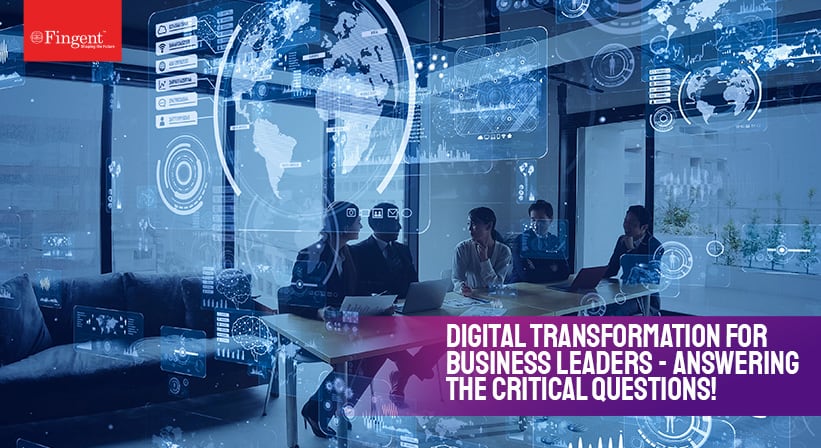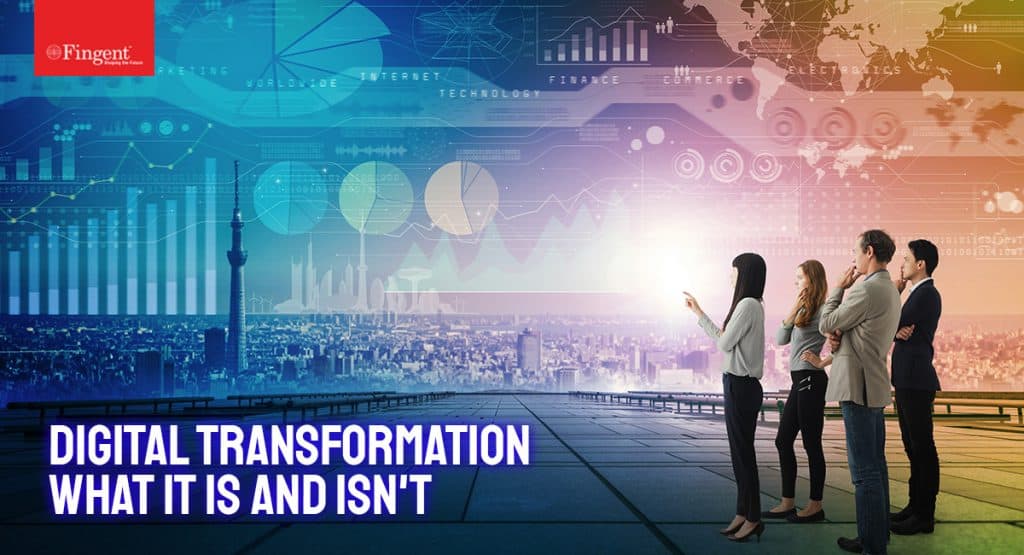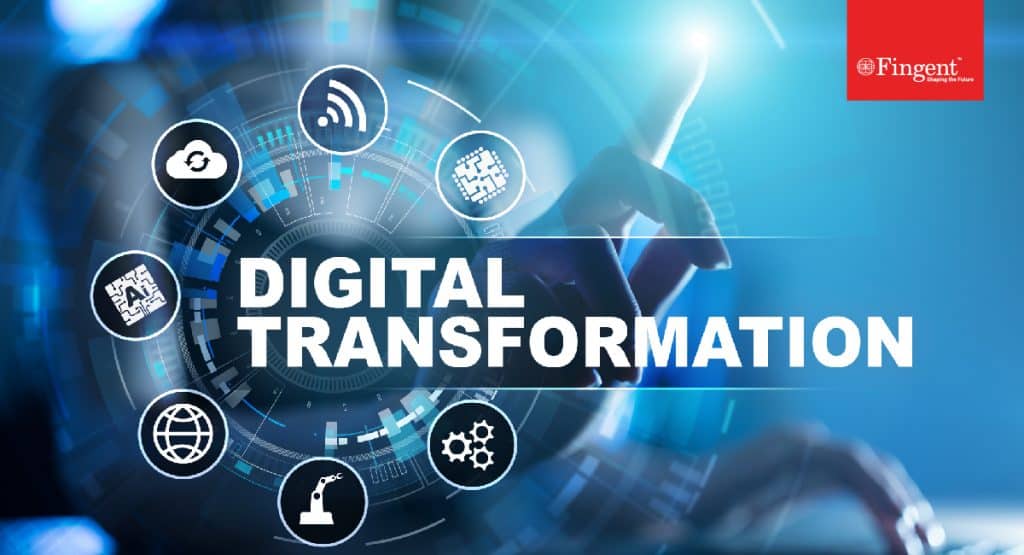Category: Digital Transformation
Building a successful business is a marathon. But determination and a business growth mindset can make it happen. If you are a business owner looking for a consistent approach to growing your business, you must realize that the essence of your company is the ability to establish trust with your customers.
True, building customer trust and loyalty takes time, effort, and persistence. But when you build trust, you are turning the key to rich dividends as your customer evangelists gear up to advocate your business. In turn, it increases brand visibility, attracts more consumers, and increases revenue.
In this article, you will learn the importance of building customer trust and loyalty in the growth of your business. You will also learn how emerging technologies can help boost customer trust in 2022.
Why Building Customer Trust And Loyalty Will Matter The Most Going Ahead?
As the world battles to contain the current pandemic crisis, customer trust and loyalty are being put to the test. However, it is good to remember that this is just one of the many crises we will face in the future. Now is the time to let your customers know how important they are to you.
Customer trust and loyalty are not just important where competition is fierce. It is a brand differentiator that could make or break a business. In a way, customer trust is an “insurance policy” against any future upheavals. It can ensure your survival if you face problems in the future. It will also ensure that your business thrives when others struggle to find a foothold.
Customer trust and loyalty are also important because they are constantly bombarded with various options. And for obvious reasons, this will only increase in the future. The need to build customer trust and loyalty has heightened, thanks to the immediate effect of emerging technologies.
How Can Emerging Technologies Help Boost Customer Trust?
Technologies are continually evolving and will always impact customer trust and loyalty. The speed of this change is faster than ever now. With emerging technologies, companies must prepare by identifying those trends now and capitalizing on them before it is too late.
The influence of technology can be a powerful catalyst to build customer trust and loyalty. Businesses that do not choose to move with emerging technologies will be left behind and may have to face business disruption.
Today, customers are becoming more tech-smart. To boost customer loyalty and trust, businesses must stay up-to-date with emerging technologies. Here is how you can boost customer trust:
- Technologies can help you keep your lines of communication open, fostering relationships
- Converse where and when you need
- Create a high level of personalization to promote brand loyalty
- Create an experience both online and in real-time
Read more: Customer Retail Software Solution: Everything you need to know!
Technologies That Help Drive Customer Loyalty Through Unique Experiences
There are many opportunities to engage your customers and build their trust and loyalty. But that is only possible if your business is equipped with the right tools to capitalize on it. Consider some:
1. Chatbots
The influence of technology offers companies solutions to meet higher expectations. AI-powered chatbots enable businesses to better communicate with their customers. It helps you to be there with relevant messaging and information whenever the customers choose to reach out.
This has a significant impact on customer trust. It is noted that customers are increasingly willing to buy a product through chatbots.
Additionally, chatbots provide detailed records of conversations with your customers. This provides you with data that can be analyzed to gain insights on customer pain points. This data can also be used to improve your products and services.
2. Voice capabilities
Voice capabilities can be relied on to engage customer loyalty and facilitate actions. These capabilities can serve as a useful tool to the customer as it leverages data to make customers’ task simpler and more seamless.
Voice-enabled technology enables your company to do all these more efficiently. Besides, it appeals to busy customers as it indulges them in a quick shopping experience. This builds customer trust and loyalty and encourages repeat business.
3. Virtual and Augmented Reality
Virtual and Augmented Reality (AR and VR) technologies are game-changers in the way businesses communicate and interact with their customers. They enable customers to educate themselves and solve their issues better than ever before.
Additionally, these technologies will provide your sales reps better understanding of what the customer is going through. Thus, it increases their empathy and enables them to come up with better solutions for your customers’ issues.
Virtual and Augmented Reality are enabling the visual journey of the customer allowing them to search by looking at an object. This can open to new experiences. The resulting data can be used for innovative engagement in the future.
Read more: 7 Ways Augmented Reality will Transform Experiential Marketing!
4. Customer Relationship Management (CRM)
CRM (Customer Relationship Management) is a tool for tracking and managing a customers’ journey. It makes communication between marketing teams more efficient.
A CRM tool allows retailers to analyze huge amounts of customer information including the feelings that drive customer behavior. This enables your company to establish a deeper connection with your customers. Using this technology will help you craft more highly personalized messaging and new features to your services and products.
5. Virtual showrooms
Many shoppers still prefer the in-store experience. Virtual reality allows customers to see a 3D rendering of a kitchen or other renovations. It also allows customers to pick and choose the items they would like in their virtual room.
This technology can also be useful in purchasing clothing from the comfort of their homes as it allows them to mix and match.
6. Artificial Intelligence
Artificial Intelligence (AI) can help your business stay a cut above the rest. It is a great tool to build customer loyalty and trust.
AI can provide you with needed information to understand the purchase behavior and interaction patterns of your customers. This information can be leveraged to design products that suit your customers.
Natural Language Processing (NLP), computer vision, and deep learning can be used to analyze a vast database of visuals and text. You can use this information to identify the main themes in colors, patterns, styles, and so on of your products. These findings can be implemented while designing future products.
Gear Up for Exciting Opportunities
Emerging technologies uncover exciting opportunities for businesses and are poised to increase economic growth by building customer loyalty and trust. Are you in on it? Give us a call and let’s get talking.
Stay up to date on what's new

Featured Blogs
Stay up to date on
what's new



Talk To Our Experts
Software as a service (SaaS) is a fast-growing IT segment that commands the highest adoption rate among public cloud services, such as PaaS, IaaS, BPaaS, and others. In 2020, the worldwide end-user spending on Cloud Application Services (SaaS) accounted for USD 102,798, which shot up to a massive USD 122,633 at the end of 2021. Gartner examines that the adoption of scalable, on-demand cloud models enabled businesses to achieve cost efficiency and business continuity in a pandemic-afflicted economy. The rise in the adoption of public cloud services is giving an impetus for organizations to accelerate their digital transformation plans.
Understanding more about SaaS app development is significant because it:
- Helps optimize IT costs and conserve cash,
- Aids and secures remote work, and
- Ensures business resiliency.
Watch video: Advantages of moving your key workloads to cloud
SaaS solutions are inevitable in building and sustaining a collaborative, agile, mobile, and hybrid work environment. This post sums up the nitty-gritty you need to know about SaaS application development.
What is SaaS application development?
Ever since the launch of the internet, Application Service Providers (ASPs) that deliver software to users over the internet on a subscription basis have been popular. ASPs allowed users to subscribe to the applications and associated functionalities by following a usage-based transaction pricing model. While it was a major breakthrough, ASPs weren’t fully successful in reducing IT costs and simplifying deployments and upgrades. Thanks to cloud computing; the rise of SaaS applications has lowered the development time, cost, and effort for enterprises. Businesses of all sizes are now expanding their investments in SaaS development.
Software as a service (SaaS) is a software licensing and distribution model in which the application is centrally hosted on the cloud and is maintained and updated by the SaaS developer. Along with Infrastructure as a service (IaaS) and Platform as a service (PaaS), SaaS is one of the key cloud computing models that’s widely marketed to both business (B2B) and individual (B2C) users. Netflix, Office 365 suite, Google Workspace, Cisco WebEx, etc. are the common SaaS products that we use every day.
Read more: Top business drivers that power legacy cloud migration
Why are businesses investing in SaaS app development?
SaaS was an extremely profitable business segment in 2020. According to a 2018-2023 forecast, companies running on SaaS will rise from 51% to 86% in a span of five years. SaaS-based solutions have enabled several business sectors, including virtual collaboration, e-commerce, FinTech, supply chain automation, and healthcare to thrive despite the large-scale disruptions inflicted by the global pandemic. Here are a few factors that make SaaS a hot choice in the investor’s market.
1. Manage costs
SaaS applications require minimal upfront investments. The Pay-as-you-go model allows you to start with a small capital and expand later when you anticipate better business growth and profitability. SaaS application deployment takes less time and money when compared to a traditional on-premise system setup. Most SaaS providers offer dedicated application maintenance and support which saves you from hiring and managing expensive in-house IT teams.
2. Reduce IT dependencies
Your SaaS application development services provider will take care of hardware maintenance, system failures, and downtimes, software updates, routine maintenance, and backups, etc. Based on your business requirements and the services subscribed to, the SaaS provider will help you customize the application, upgrade the software to its latest version, and offer training to your staff. This helps you focus on the core business activities.
3. Seamless integration with other systems
SaaS-based applications can be integrated easily with your legacy systems or any other third-party software that you use. By developing custom APIs and plugins, SaaS providers like Fingent will help integrate your CRM with ERP or HRM with Payroll software. The SaaS application can work as an extension of your current software, adding value to your daily operations. Cloud infrastructure and on-demand computing model empower you to scale up and meet the surging demands.
4. Mitigate security risks
SaaS software providers are responsible for securing the application, operating system, platform, network, and physical infrastructure. Along with these security options, the SaaS provider will help secure your customer data and user access by applying a few techniques such as Identity and Access Management (IAM), cloud data encryption, Data Loss Prevention Software (DLP), compliance solutions, real-time threat intelligence, behavioral analytics, Cloud Access Security Broker (CASB) solutions, etc.
Read more: Why is cloud security important? What are the best practices to ensure cloud security?
Points to consider before starting your SaaS app development project
There are a few technical and business factors to consider while developing a SaaS product.
Technical considerations in SaaS development
- Database design: Choose a flexible and secure database(s) based on the data type, scalability, anticipated load, budget, programming languages used, read-to-write actions involved, and other specific business purposes.
- Technology stack: Right technology stack helps build the right SaaS product. By partnering with a SaaS provider like Fingent, you can leverage the latest and the best tech stack to incorporate all the required features into your SaaS application.
- Third-party services integration: Businesses that use SaaS products may want to integrate their applications with third-party services such as payment providers, chat and email service providers, customer-answering bots, etc. Ensure that the chosen third-party services are budget-friendly, scalable with your growth plans, credible, and offer excellent community support.
- Regular patches and updates: Your SaaS application should be up-to-date and scalable to match your clients’ growing demands. Software updates must be scheduled, and new functionalities and changes to existing features (feature enhancements) should be tested thoroughly.
Non-technical considerations in SaaS development
- Conduct market research: Prior to starting your SaaS project, it’s important to analyze the market, understand what users are looking for, study competitors, and then visualize your SaaS solution. The market analysis leads to better project planning with realistic goals in mind.
- Make the software user-friendly: The end-user of your SaaS product is not necessarily a techie. The software should appeal to the audience for which it’s built. Market it to the right audience by applying a fair pricing and subscription policy. Devise marketing strategies to improve client adoption.
- Ensure software compliance: Security risk is a major barrier to SaaS adoption. Before publishing your SaaS software, ensure that it has robust data protection and sharing policies, user access policies, regular software maintenance, and 100% compliance with standards such as GDPR, HIPAA, etc.
- SaaS pricing model: SaaS software market offers a variety of pricing models such as usage-based pricing, per-feature pricing, flat-rate pricing, tiered pricing, and so on. Determining the right pricing model depends on factors such as how much your customers are willing to pay, how far your product is capable of solving their problems, and how your competitors are charging for a similar suite of products. Ensure that the pricing model doesn’t stagnate your product.
SaaS app development best practices
Here are a few best practices to ensure the performance, productivity, and acceptance of your SaaS application.
1. Focus on MVP creation as the first step
Many SaaS developers use MVP (Minimum Viable Product) as the initial step for building a successful SaaS application. An MVP is a fully functional and quickly developed miniature version of an application built to test the SaaS product’s viability. Developing an MVP will help you understand the feasibility of your business idea and the changes to be accommodated based on user feedback. It helps reduce your development cost and effort.
2. Multi-tenancy architecture
A SaaS application isn’t made for a single user. It should be flexible enough to serve thousands or even millions of customers. Multi-tenancy is crucial in cloud computing as it allows multiple tenants (users) with different roles and access privileges to be hosted in the same environment. Each user will have a separate and secured space within the server to store their data. Multi-tenant architecture improves your ROI and helps update and maintain your SaaS application.
3. Personalize your SaaS product
As remote and hybrid workspaces go mainstream, and BYOD becomes common, users seek personalized SaaS products that don’t require extensive admin support. Users demand high-level personalization with your SaaS app. For example, changing the UI’s appearance, integration of Single Sign On (SSO) feature, configuring the dashboard to track the metrics quickly, and so on. They may want the SaaS app to be available in both web and mobile and any other portable devices that they use. Make your SaaS app safe and compatible to address such personalization requirements.
4. Prioritize and optimize features
Adding too many features as well as avoiding important features are equally wrong. Consider the reach and impact of a feature addition, such as how many users will be affected or how many customers are looking for the new feature. Track the SaaS app’s usage patterns by leveraging analytics or run a survey to understand user preferences. If more than 50% of them like an existing feature, optimize it. If only 5% of your users are interested in a new feature, eschew it.
Read more: A comprehensive guide to modern cloud application development
How Fingent helps develop exceptional SaaS applications within your budget
With Fingent, you are just a few steps away from building and managing your own SaaS application development team. Right from developing an MVP to actual product launch and post-launch support, our team handholds customers through every stage of development.
InfinCE, the world’s first digital workplace orchestration platform, stands as a testament to our SaaS development capabilities. So are ReachOut Suite FSM and Skill Lake LMS. Our goal is to help businesses solve challenges through technology. We help legacy companies migrate their software solutions to the cloud as well as develop cutting-edge SaaS solutions that empower them to thrive in the new normal.
Read more: What makes Fingent your best technology partner
If you have an idea or a requirement, discuss it with us asap. We will set up a discovery call with you and get back with a ballpark estimate. This is followed by a detailed proposal, including mockups, demo videos, and visualizations. Our communication method is simple enough to answer your queries related to software app development. We do business with organizations of all sizes – small and large – to help them transform lives through technology. Ready to watch us in action? Talk to our SaaS expert now.
Stay up to date on what's new

Featured Blogs
Stay up to date on
what's new



Talk To Our Experts
- Introduction
- A Brief History Of Metaverse
- A Simple Definition Of Metaverse
- Metaverse And The Future Of Work
- Metaverse Applications In Our Work World
- Potential Concerns Around Metaverse
- Metaverse: What Lies Ahead?
Introduction
Metaverse is the next generation of the internet. Blending the elements of virtual reality, augmented reality, online games, social media, and cryptocurrencies; metaverse ushers in a novel phase of interconnected virtual experience, that reimagines the future of work. This blog will take you through everything you need to know about Metaverse – from history to how it will impact the future of work!
A Brief History Of Metaverse
In his 1992 sci-fi novel Snow Crash, author Neal Stephenson coined the phrase metaverse – probably the first time most of us heard it. The novel portrayed metaverse as a successor to the internet, depicting the author’s vision of how a virtual reality-based Internet might evolve in the immediate future.
Today, the metaverse is moving from hypothetical to real, inspiring enterprise tycoons to rebrand and innovate. The recent rebranding of Facebook, Inc. into Meta Platforms, Inc. was solely inspired by metaverse. In the Founder’s Letter, Mark Zuckerberg underscores that “We are at the beginning of the next chapter for the internet. The next platform will be even more immersive — an embodied internet where you’re in the experience, not just looking at it. We call this the metaverse, and it will touch every product we build.”
Ever since the publication of Snow Crash, the notion of metaverse has enjoyed constant popularity. The concept has highly inspired the creators of online virtual worlds such as Second Life and Active Worlds. The success of Snow Crash was such that it was made a mandatory read for Microsoft’s Xbox development team.
Until recently, the application of metaverse was restricted to internet-based video games and social media. Metaverse was predominantly used to improve the quality of immersion in virtual reality environments. The past two years witnessed a tremendous shift in the work culture, with remote and hybrid workspaces becoming the new normal. The application of metaverse technology in improving work productivity, creating interactive learning environments, and facilitating virtual reality home tours is on the brink and companies like Fingent are already on the track with best-in-class POCs and ace development skills.
Read more: What’s in Store for Real Estate this 2022?
A Simple Definition Of Metaverse
Metaverse is coined by joining two words; “meta” meaning beyond and “verse” referring to the universe. Literally, metaverse stands for a virtual world that lies on top of, or beyond the physical world. Metaverse is an extension of the real world that is amplified by emerging technologies such as extended reality (a combination of VR, AR, and MR), non-fungible tokens (NFTs), cryptocurrencies, AI, IoT, and more.
Metaverse And The Future Of Work
When the COVID-19 pandemic swept industries and stomped economies, the internet, and other work-from-home technologies helped us stay resilient and ensure business continuity. Many industries became technology-intensive, such as education, retail, conferencing & event management, etc. Metaverse will further transform these sectors by implementing virtual reality (VR) based wearables that allow users to experience and/or purchase the services with the help of immersive virtualization (without leaving the premises of their homes).
Imagine you want to go for a movie with a colleague after working hours or hang out with a friend for dinner. With metaverse, you’ll have alternatives for all these social interactions, especially when you want to avoid the hassles of a physical word, such as social distancing.
Metaverse will significantly transform the way we work by leveraging VR:
- Offers multiple choices with respect to work location and ways of working. Employees will no longer be confined to their workstation cubicles.
- Metaverse helps build a centralized digital work environment that will smoothen the transition to remote working.
- Freedom from tedious daily commutes, in-person meetings, expensive business trips, and professional office apparel.
- Guarantees physical safety from getting exposed to harmful viruses like COVID-19 or Omicron. Virtual collaboration reduces the spread of transmittable illnesses.
- Makes idea-sharing and collaboration more effective and accessible than ever. Easy to join virtual meetings and participate actively in discussions by gaining a near-physical experience.
- Eliminates the risks and hazards present in the physical world and makes the workspace safe and convenient for employees.
Case Study: How Fingent enabled a leading educational establishment to innovate their campus visits by leveraging virtual reality. Download now!
Metaverse in real-life: Two leading examples
One of the best examples to demonstrate the impact of metaverse on the future of work is the recently launched Horizon Workrooms. Introduced by Facebook, Horizon Workrooms is a virtual meeting space that allows you to collaborate with your coworkers virtually without feeling isolated or deprived of workplace interactions during remote work. The underlying virtual reality technology will help you join meetings as an avatar or dial into the virtual room using your computer through video call. Powered by VR and delivered via the Oculus Store, the Horizon Workrooms aims to leverage VR as a new computing platform that will reimagine the future of work.
Another notable example of the metaverse in a workplace is the latest Microsoft Mesh app. Mesh leverages a mixed reality experience that allows you to connect, share, and collaborate with your coworkers in immersive, near-natural virtual environments. Using Mesh, you can create AI-enabled 3D avatars that enable you to join meetings, visualize and annotate content, and use 3D objects to explain and point out features. The purpose is to make users feel like they are physically present in the meeting room. Currently, Mesh-enabled experiences are available for HoloLens and AltspaceVR users.
Metaverse Applications In Our Work World
In no time, the COVID-19 pandemic forced corporate employees and industries to shift from physical to virtual. Platforms like Zoom and Slack facilitated remote collaborations far and wide, and across different time zones. Organizations are discovering the new and improved possibilities offered by virtual collaboration tools, making metaverse an inevitable technology in the future of work.
Case Study: Fingent develops a unique mixed reality application for a leading university by combining facial recognition technology. Read more.
Top three industry applications of metaverse:
1. Real estate: In 2020, Upland.me, the leading blockchain-based metaverse tagged to real-world addresses sold a virtual property of the New York Stock Exchange (NYSE) for a mammoth 23,000,000 UPX (US$ 23,000) in their year-end auction. While Upland’s target was to sell the virtual property at a premium of 65%, the deal secured them a massive premium of 368%.
Real estate brokerage firms and property trading companies can leverage metaverse to combine physical and virtual worlds, allowing users to buy, sell, and trade simulated properties that are mapped to real addresses. The application of blockchain-based cryptocurrencies will ensure the safety of transactions and the true possession of digital assets in the world of the metaverse.
2. Commerce: Fashion brand Gucci’s digital-only Dionysus bag was sold at a higher price than its physical version during an auction on Roblox- the leading video game platform. While the bag’s physical retail value was $3,400, it commanded a virtual resale price of $4,115, despite its non-transferability outside the Roblox environment.
Metaverse will offer consumers a more interactive in-store experience that allows them to try new products and explore novel brands using AR and VR sets. It’s a step ahead of the current e-commerce applications that will give way to 3D virtual shopping powered by metaverse.
Read more: Extended Reality: Six ways it is improving customer experience and helping brands grow
3. Education: A recent study reveals that around 91% of the world’s student population have experienced educational disruptions over the past two years. While emerging technologies accelerated the transition to online education, the academic world is still in a constant chase for immersive, inclusive, and interactive learning technology that can improve the educational ecosystem.
Education is a key focus area of the metaverse. Facebook recently announced that it will partner with Coursera and edX to develop a versatile AR curriculum. In the 2021 ASU GSV Summit, the Arizona State University exhibited a VR classroom that allows students to virtually explore a sanctuary of endangered species, which aroused the curiosity of the participants. Subjects like astrophysics, biology, surgery procedures, anthropology, etc. can be taught more effectively by leveraging metaverse.
Read more: How virtual reality improves the standard of medical education and training
Potential Concerns Around Metaverse
Statista reports that an average of 34 million units of VR headsets would be sold by 2024. As industries increasingly embrace VR to meet both enterprise and consumer demands, the universal adoption of full-fledged metaverse applications doesn’t seem fair. However, we still need to overcome a few challenges that slow down metaverse adoption.
- New verification methods should be developed to solve identity theft and reputation loss in the metaverse. This is important to prevent crimes such as facial forging, footage and voice tampering, etc.
- Any online environment isn’t devoid of data and privacy concerns. It’s vital to improve data security and privacy protection methods to keep your data safe in the metaverse world.
- Robust digital currency and payment systems should be developed to ensure the security of transactions in the metaverse virtual marketplace. To ensure safe trading within metaverse, built-in transaction verification systems should be implemented.
- As metaverse is expected to bring more people from different countries together in a virtual collaborative space, it’s important for lawmakers to devise the legislation that governs virtual interactions. Countries need to focus on setting up virtual legal domains and making the digital space safe for users.
- Upgrading the application of metaverse from the realms of gaming, fun, and entertainment to the domains of learning, corporate work, and industries requires careful planning. The progression should be correlated with both the business outcome as well as the demands of customers and employees.
Read more: Reality technology services offered by Fingent
Metaverse: What Lies Ahead?
Though metaverse is advancing to take us to the threshold of a virtual universe, the technology is still at a nascent stage. As more tech giants and startups join the bandwagon, we can expect that metaverse will combine the best of reality technologies like AR, VR, and MR to transform the future of work. John Riccitiello, the CEO of Unity Technologies (developer of Unity game engine) observes that by 2030, Virtual Reality headsets will be as common as today’s gaming consoles.
Amidst the challenges that choke businesses during the pandemic, promising experiments around metaverse prove that remote work is a huge problem that VR could resolve. Industries that were hitherto dependent on on-site and field activities are taking a different path by embracing VR. We can expect that metaverse will soon be the efficiency driver in the new normal of work. If you have any queries on metaverse or need a demo on how VR can help you do business better, write to us.
Stay up to date on what's new

Featured Blogs
Stay up to date on
what's new



Talk To Our Experts
Across the globe, the real estate industry took a hard hit during the COVID-19 pandemic, which left millions jobless. The huge migration of construction workers affected thousands of construction projects. The once-booming realty market experienced a shattering impact.
Not for long! The resilience of the industry paid off. Here is a look at how the real estate industry met the challenges head-on and what is in store for it in 2022.
Meeting the Challenge Head-On
The arrival of the Coronavirus vaccine geared up the real estate segment for yet another phase in early 2021. It realigned itself with buyers’ new expectations. Though the real estate sector has not remained immune to recalibration, it has shown remarkable resilience in the face of the pandemic.
Early 2021 saw a growing thrust toward digitization and technology adoption, beginning a new era in this sector. There has been a significant rise in virtual property events, cloud-based services, digital launches, and much more.
The real estate market is always in flux. It is highly localized with different conditions in different cities, states, and metro areas. Understanding the fundamentals of this segment can help you stay on top of all these changes and challenges that come with the economic downturn. As we gear up for a new year ahead, let’s begin by understanding what factors change the real estate market.
Read more:How Technology Can Solve The Challenges Of The Real Estate
Factors That Will Impact The Real Estate Market In 2022
Though it may be tough to estimate the exact sales volume and value growth, there seem to be enough catalysts to give rise to optimism.
- Real estate prices: Real estate prices are influenced by local buyer demand and the amount of housing supply that is available for buying. Lower rates attract more buyers and vice versa.
- Shifting property needs: The pandemic forced people to spend more time indoors. Hence, there has been a shift in property needs.
- Consumer house-buying power: Affordability is affected by incomes, inflation, and interest rates. When incomes increase, homebuyers might be able to afford higher-priced homes than they could have previously afforded.
- Mortgage rates: Interest rates impact demand, home prices, and affordability. It also fluctuates on factors such as Federal Reserve policy, bond market, inflation, and so on.
- Housing inventory: When housing supply is low, demand is high. This increases sellers’ market. If the supply is high, on the other hand, there will be more buyers to purchase them. This will slow down price growth and the real estate market will remain less competitive.
- Cycles and crashes: Along with the overall economy, the real estate market tends to be cyclical. There will be booms and busts. Fortunately, homeowners today are more financially equipped to handle the loans they have taken.
A Peek Into The Future Of The Real Estate
Among all the sectors, the real estate segment is showing tremendous growth. Here is what we can expect in 2022:
1. Effect of work-from-home on real estate
As the pandemic grinds on, tenant preferences will drive changes in real estate. Many homeowners will gravitate to newer buildings with better ventilation systems and modern amenities like touchless systems.
2. The rise of PropTech and digital transformation
The no-touch scenario has catapulted the innovations of PropTech to center stage. A 3D self-guided tour of the home can be a unique experience. Some real estate firms have put their entire leasing and renewal processes online.
3. Last-mile funding by the government
Governments help for delayed construction projects, along with incentives and attractive payment schemes are attracting homeowners. A fall in interest rates has been an additional incentive. So, developers will continue to witness a surge in inquiries across key real estate segments.
Technologies To Invest In To Remain Resilient
Property technology is booming and changing the way we look at property investments. This digital landscape is allowing both the buyers and investors to view multiple properties without ever having to move out of the comfort of their homes. Here are some examples:
1. Rise of Artificial Intelligence
Artificial Intelligence can accelerate the decision-making process as it aids in asset identification and selection. AI algorithms constantly test the feasibility and effect of different parameters. AI can also help predict any safety hazards or construction defects. This can save a large amount of time and money.
AI’s predictive analytic algorithms can find variations in the demographic pattern of the micro-market. Among many others, it can also detect the income distribution of individuals in the vicinity. This aids in identifying the true intrinsic value of the property.
2. Cloud-based technology
Cloud-based technology assists in the storage of large data. Information regarding properties can be stored and retrieved by stakeholders to answer any customer queries. This lowers manual work and saves time spent in looking for papers.
Read more: A Comprehensive Guide To Modern Cloud Application Development
3. Virtual tour
The spread of Coronavirus restricted movement making it difficult to visit a property in person. However, virtual visits can now be arranged to help buyers make an informed decision.
This allows stakeholders to set up a virtual meeting with the buyer and answer all their questions related to the property. Thus, instead of depending on imagination buyers can now ‘see’ for themselves.
4. Robotic process automation
Robotic process automation (RPA) can be used to automate regular clerical jobs at the site. These jobs may include regulating contracts and approvals between multiple vendors.
RPA enhances the likelihood of more deals being closed. It is more dependable as it significantly reduces human error.
5. Mobile apps
Rental and purchasing mobile platforms have gained popularity in recent times. The real estate industry constantly faces high-level competition. Hence, it demands a digital solution that can aid agents in their work and allow buyers to discover what they are looking for.
These digital solutions can include mobile applications for both agents and buyers. Developing a mobile app can distinguish you from the competition. They increase your chance of being found by your customer before your competition.
Mobile apps are more engaging and can provide a more rewarding customer experience. Customized solutions in the mobile app enable your agents to quicken the sales process.
Proptech Expertise Of Fingent Can Enable Your Business To Remain Resilient
Fingent is well-versed with the complexities that come with the development and implementation of real estate technologies. We are here to understand your idea and turn it into reality. With our expertise, we can create products that are driven by AI, Video conferencing, and more.
Take a look at: How Fingent created an all-in-one property management solution for Rentmoji, a leading Real Estate management firm in the US.
Our dedicated team can offer a wide variety of real estate software services. We strictly adhere to local data privacy and protection policies. We ensure to keep up-to-date with legislation so that apps remain secure and ready to use anytime, anywhere.
Fingent ensures that you are market-ready, armed with competitive technologies. Our experts can help you discover the PropTech potential in your real estate business. We have hands-on expertise and skills in the industry. We can collaborate with you and tailor software to your specific needs.
Fingent is equipped to create the most sophisticated and stable applications that meet your requirements. By partnering with us will enable you to use real estate software that is a perfect fit for your business values and expand your market scope. Drop us a line and let’s discuss your needs.
Stay up to date on what's new

Featured Blogs
Stay up to date on
what's new



Talk To Our Experts
The pandemic is now the biggest and most critical challenge of traditional banking. Some of these challenges are revenue pressure, data security, customer service management, data collection and analysis, risk management, and so on. These are the warning lights and alarm bells that call for caution over emerging risks. AI (Artificial Intelligence) has gained recognition as an effective solution.
AI is empowering the banking industry to provide individualized frictionless customer experiences. It is driving customer loyalty and profitability by automating banking processes.
In this article, we will discuss how AI can resolve banking challenges. We will also discuss some of the common challenges banks might encounter in implementing AI and how a tech partner can help deploy AI better.
How AI Can Resolve Banking Challenges?
AI is the new electricity – Andrew Ng.
Modern technology such as AI can be tailored to the specific needs of the banking sector. The digital age is opening up new opportunities. According to a Business Insider research report, banks are expected to save an estimated $447 billion by 2023 with the help of AI applications. Given that, here is how AI can resolve some challenges.
Read more: Digital Transformation in Financial Services: All You Need to Know
1. AI-enabled conversational interfaces
Chatbots are one of the most popular cases of applying AI in banking. Bots are programmed to communicate with thousands of customers with minimum expense. Insider Intelligence estimates that the adoption of chatbots could save the banking sector $11 billion annually by 2023.
Mobile banking has become the most popular and chatbot services attract users’ attention and create a unique brand identity. AI functionality in mobile apps is helping banks generate more revenue than when customers visit their branches. Banking organizations that leverage AI improve their quality of services and remain competitive despite the crisis.
2. AI-enabled data collection and analysis
Banks generate an enormous amount of data every day. Collecting and recording this data is an overwhelming task for employees. Besides, all this work may be a wasted effort if there is no proper plan to use this data. Hence banks need to determine the relationship between the collected data. That is another major challenge.
AI-based apps improve the user experience by collecting and analyzing data. The collected data then can be used to grant loans or fraud detection.
3. AI-enabled Risk management
Providing loans is a challenging task for bankers. Extension of credit to a fraudster can get the bank into difficulties. Or a borrowers’ economic downturn can adversely affect the bank. 2020 statistics show that credit card delinquencies in the US alone rose by 1.4% in a duration of six months.
AI-enabled systems can appraise a customer’s credit history more accurately. Additionally, AI-powered mobile banking apps track financial transactions and analyze user data to help banks anticipate the risks associated with the extension of credit.
4. AI-powered data security
Credit card fraud is on the rise. It is the most common type of personal data theft. AI-powered systems can analyze customer behavior, location, and financial habits. So, if it detects any unusual activity, it triggers a security mechanism immediately.
Read more: Artificial Intelligence and Machine Learning: The Cyber Security Heroes Of FinTech
When all these challenges are successfully tackled, how does the AI-powered bank look like? Read on to find out.
How Does The AI-First Bank Look Like?
AI-bank rises to meet customers’ expectations and remain competitive. The AI-powered bank will offer intelligent and personalized propositions and experiences as it understands customers’ past behavior. It can span across multiple devices providing a consistent experience to its customers.
What Are The Common Challenges Banks Might Face In Implementing AI?
Implementing AI technology in banking is not always easy. You need to ensure you have the right team and expertise. You will also need access to data, resources to invest in the project, and parties that are willing to adopt the new technology.
- Access to data: It is one of the biggest challenges to implementing AI. Additionally, banks might face challenges with training data. It becomes hard to update or improve the AI models if the team does not have the necessary information to use and learn from.
- Localization: Localization is critical to the banking sector as they often need to design models with multiple markets that they serve. Localization can help you properly customize the customer experience. Your data partner can support you with localization as they have skilled linguists to develop aspects such as style guides and voice persona.
- Security and compliance: It is quite challenging to keep all the data confidential and secure. The right data partner can offer a variety of security options. They have security standards to ensure your customers’ data is securely handled. Look for data partners who have strong data protection with certifications and regulations. They will be able to provide secure annotation. They will also provide onsite service options, private cloud deployment, on-premise deployment, and so on.
- Trust, transparency, and explainability: AI models can only be successful if they can be understood and trusted by customers as they will want to be sure that their personal information is handled and stored securely. Talk to your partner and ask them to explain the model to you. Or you can always go back to the training data that was used to develop the model and extract some explainability.
- Data pipelines: Connecting data pipeline components to use siloed data is not as easy as it seems. To do this effectively, banking institutions must ensure their data is collected and structured correctly. They must also ensure that this information enables ML models to predict according to the business goals. Look for a partner with extensive security offering as their expertise will enable your banking service company to be successful and scale.
Read more: The New Untapped Opportunities for FinTech Companies in the Coming Years
How A Tech Partner Like Fingent Help Deploy AI Better?
Implementing AI into banking is a serious responsibility. It takes in-depth knowledge, an enormous amount of time, and dedication to accuracy. That is what Fingent has. We do not just follow the trends. Instead, we focus on how AI can add value to your particular banking needs.
Fingent can bring transparency and explainability of AI automated decision making to your banking processes. We can provide an easy-to-use interface through APIs delivered either on-premise, in the cloud, or as a SaaS offering.
By embedding AI and ML into our products, we can accelerate the release of explainable business models that will underpin new AI use cases. These can help create a seamless customer journey and automate manual processes with self-learning capabilities. We are confident that we can help you deploy AI better. Give us a call and let’s get talking.
Stay up to date on what's new

Featured Blogs
Stay up to date on
what's new



Talk To Our Experts
The global growth outlook remains uncertain. Companies are forced to operate in an environment characterized by unprecedented technological change and evolving consumer demand. The situation demands decisive action! Companies MUST look for new ways to grow and add value if they are to survive. The obvious solution is old business models must evolve and drive innovation. This is the only way businesses can respond to unexpected risks and opportunities. Sustainability plays a vital role here.
Sustainability can reduce the environmental footprint and deliver significant cost savings through cost avoidance. It can offer new growth opportunities and can build brand equity by creating emotional connections and making consumers feel good about embracing sustainable brands. Let’s get right into it and discuss more how you can drive innovation and business success through sustainability.
Let us first understand what innovation really is.
What is Innovation?
According to Merriam-Webster, innovation is “the introduction of something new.” This includes products and services. However, it also includes improvements in business processes or business models.
But sustainable innovation goes a step further. It is boosted and driven by concern for resources and the environment. It involves using concepts and products that were developed as a result of environmentally-aware designs and practices.
Businesses that have integrated sustainability into their innovation processes have framed their discussions around growth and returns. This helped businesses add measurable value for all stakeholders. Proper planning can help industries develop insights for the future. Such planning can guide their sustainability strategy as they develop sustainable innovation goals.
Read more: Prepare for the Future of Digital Innovation with these 10 Services From Fingent
Why Choose Sustainability-Driven Innovation?
Sustainable innovation results in better business models, newer market segments, improved processes, and so on. It caters to consumer demand for greater sustainability.
As a result, businesses can achieve greater economic performance. On the other hand, it also results in a cleaner, healthier, and more stable world – one that propels economic growth! Here are three core reasons why you must choose sustainable innovation over traditional innovation.
1. Contributes to sustainable businesses
Sustainable innovation meets the needs of the current generation without compromising the needs of the future generation. Businesses must actively incorporate issues such as climate change into their innovation processes.
Companies that go beyond seeking immediate profits think long-term. Such companies invest in technologies and people for the future. Compared to their non-sustainable competitors, companies that rely on sustainable innovation bring in better people with personal ethics and thus contribute to sustainable business.
2. Better innovation and more innovation
Sustainability-oriented businesses produce more patents and more impactful patents. These companies think more broadly and learn from different perspectives welcoming insights and solutions from others. This leads to better innovation and more innovation.
3. More resilient
During these turbulent times, it is critical for businesses to remain resilient. Firms that are sustainability-oriented are more likely to experience less share price volatility. They tend to generate more revenues in the long run and thus survive through any crises compared to their competitors.
Read more: Custom Software Solutions: Ideal Way to Build Business Apps
How To Develop A Sustainability Strategy
Sustainability can be a game-changer. It can drive innovation that shapes how key resources are used in products and services. Focusing on reducing waste or finding substitutes can be a powerful driver for sustainable innovative products and operating models.
Companies that combine environmental, societal, and financial priorities to re-imagine their core business models and stay ahead of the competition. A structured innovative strategy reinforces business advantage and the environmental and societal benefits. Here is a four-step strategy that can drive innovation and business success.
Step 1: Endeavor to understand the broader stakeholder ecosystem
Environmental and societal issues and trends might affect the stakeholder ecosystem. So, explore the potential impacts of ecosystem dynamics. This will help you identify a range of business vulnerabilities and opportunities. These can be excellent starting points to develop a sustainable strategy.
Next, explore scaling up the business. Consider where breaking points arise and how risks and opportunities change.
Step 2: Innovate and develop new aspects
Once you identify opportunity spaces, you can now innovate and develop new aspects.
- Change the production inputs
- Create impact by influencing the product usage cycle from cradle to grave
- Increase the environmental and societal value of your products and services
- Expand the value chain
- Shorten and reconfigure the global value chain to enable accurate and secure data tracking
- Encode, endorse, and monetize the full environmental and societal value of products and services
Step 3: Test, iterate and refine
A business with weak profit margins cannot invest in sustainable innovation to amplify environmental and societal benefits. Continue to assess and re-engineer your business model to improve resilience.
Step 4: Scale the initiative by engaging people in the company and its ecosystems to expand impact and advantage
This can be achieved by leveraging three enablers:
- Partnership with other organizations within or across the sectors
- Digital technology can be leveraged to reach previously unserved or underserved populations
- Develop cultures and leadership values that attract and engage people inside and outside your boundaries
- Keep in mind the future landscape
This four-step sustainability strategy offers companies a way to systematically integrate the social and business value in your business. This strategy will help you take on innovation for both business and social value.
View infographic: What are the advantages of custom software over commercial off-the-shelf solutions?
3 Ps
It is a mistake to look at sustainable innovation as a short-term endeavor. Industry leaders must help their organization develop an effective and reliable strategy for sustainable innovation. The three Ps you will need to know to enable this are as follows:
- Purpose: Have a purpose that goes beyond profit maximization. Such a purpose will guide the sustainable innovation process to success. Industry leaders must weave sustainability into the organization’s DNA. This is only possible when they encourage and nurture out-of-the-box thinking where sustainability becomes an integral part of the business.
- Process: A successful innovation planning process must include specific sustainability requirements and performance targets. Sustainable innovation must be central to the innovation cycle, not just an additional step. Make sure you integrate sustainability into innovation planning.
- Partnership: Build strong external networks. This will bring in fresh innovative ideas. Working collaboratively with your partners can help accelerate existing projects or even kick-start fresh ones.
It is clear that innovation through sustainability is a megatrend that is here to stay! Where do you start? How can technology help you? Give us a call and let’s get talking about all the questions you have.
Stay up to date on what's new

Featured Blogs
Stay up to date on
what's new



Talk To Our Experts
As digitalization is gaining a lot of significance, many enterprises are turning to emerging technologies such as Robotic Process Automation(RPA) to streamline their operations and reduce costs. RPA automates mundane processes allowing organizations to devote more time to serving customers or other important work.
According to Gartner, Inc. , Global RPA software is projected to reach $1.89 billion in 2021, an increase of 19.5% from 2020. Despite the COVID-19 pandemic, the RPA market is estimated to grow two times by 2024.
Read more: How to accelerate your business growth with Robotic Process Automation
What is RPA?
In simple terms, RPA is an application in which a software bot leverages a combination of automation, computer vision, and machine learning technologies to automate repetitive and high-volume tasks.
RPA solutions are best suited for processes that are labor-intensive, repetitive, and have predictable interactions with IT applications. Typically, these processes may be too small in value to be automated via IT transformation. RPA tools help improve the efficiency and effectiveness of such processes without changing the existing infrastructure.
RPA software bots can perform various business processes by mimicking how humans interact with applications through a user interface and simple rules to make decisions. As a result, robots can complete the entire end-to-end process with very little human interaction.
Benefits of RPA include;
- Improved accuracy
- Flexibility and scalability
- Speeds up the processing time
- Better employee morale
- Reduces manual and repetitive tasks
- Enables better customer care
- As per Forrester, projects see a 15-month payback, 229% ROI on average
Key business challenges RPA helps address are;
- Login automatically into a system as a user
- Helps navigate around the software, using menus and shortcut keys just like a human moving the mouse or typing on the keyboard
- Interpret labels to read values from the screen. If the screen content or web page is dynamic, RPA can help find the right value on the screen.
- Read values and data from PDF reports automatically and add them to data tables.
- Inputs values into a capture screen automatically by mimicking the user’s actions. However, it can process it several times over with different values for each pass.
- Read emails and messages to understand the information they contain. For example, is the sender placing an order, making a booking, looking for information, or sending an invoice? Based on the intent, RPA will trigger the process with the message.
- Help trigger a process in a system by logging in as a user and clicking buttons.
- Collate different pieces of information and identify the next best action in the process.
Read more: How Can Businesses Overcome The Barriers To RPA Adoption?
Who is using RPA?
RPA can be leveraged by any business, especially if it involves repetitive tasks such as banking, healthcare, finance, insurance, and telecommunications. For example, RPA can be used in finance to automate governance, reconcile accounts, or process invoices. Additionally, RPA can help automate processes such as data entry, predictive maintenance, and after-sales service support in the supply chain.
Telecommunication companies utilize RPA solutions to organize new services and all the related billing systems for new accounts. RPA also helps these companies pull data from multiple systems when old equipment outages or predicts problems.
Regardless of the industry, RPA benefits the larger organizations and small and mid-size companies with its ability to streamline business processes and improve efficiency.
Should you invest in RPA?
The pandemic has caused a sudden surge in RPA as businesses are turning to cost-effective solutions to fill the workforce gap due to a shortage of employees. But again, if there is a lack of data or the process is obsolete, opting for RPA may not be a wise decision.
With the RPA market evolving, it is becoming affordable for even small and mid-size businesses who want to stay ahead of their competitors. According to the Grand View Research report, in 2019, the large enterprise segment accounted for over 67% of the global RPA while the BFSI led the market in terms of application with over 29% share of the global revenue. However, from 2020-2027, it is estimated that SMEs will witness the highest CAGR, with the pharma and healthcare sectors leading the way application-wise.
While RPA can fill the gaps in the current system and benefit the organization as a whole, companies that have large volumes of data and time-consuming business processes with well-defined rule-based steps are ideal candidates for RPA implementation.
Once the decision-makers finalize the processes that need automation, assessing ROI for individual processes is essential to quantify the benefits. A successful deployment takes one-two month, and the ROI is approximately three-twelve months.
Read more: An Extensive Whitepaper on How RPA Can Bring a Difference to Your Business
Things to consider before implementing RPA
1. Third-party integration
You will have to redesign the existing Robotic Process Automation processes and ensure they are compliant with third-party tools. It improves the scope of what RPA can achieve for a business process. For example, ERP and CRM integration is something that you must consider.
2. Cost-effective
For RPA to become a cost-effective solution, an organization needs to know which tasks are suitable for automation. Ideally, mundane and repetitive labor-intensive tasks need to be automated to impact a direct bearing on the costs of the RPA deployed. As bots work more efficiently than humans, it results in better productivity, fewer errors, and cost less. All this impacts productivity in a significant way making RPA a worthy investment.
3. Training time
For a smooth roll-out of implementing the RPA system, organizations will have to set aside time to train their employees. Therefore, you will have to be certain about the time required, especially if you plan to implement RPA across functions.
4. Deployment speed
Typically, the speed at which an organization deploys an RPA software depends on how soon it wants to reap its benefits. While some businesses cannot wait to take advantage of the RPA system, others are skeptical about their roll-out plans. In most cases, businesses that wish to implement an RPA system adapt to save costs as quickly as possible.
How can Fingent help?
If you’re looking to improve profitability, productivity, and compliance with Robotic Process Automation, contact our experts today. Our experts will not just help you strategize an automation process but also get the most out of your investment by identifying the best time to introduce RPA into your business.
Stay up to date on what's new

Featured Blogs
Stay up to date on
what's new



Talk To Our Experts
The impact of the pandemic on consumers across the globe has dramatically changed their demands, needs, and behavior. Many of these changes have critical implications for businesses in most sectors. To succeed in the next normal, businesses must respond proactively.
COVID-19 jolted consumer demand in a way that sets it apart from past disruptions. As a result, customer loyalty took a hard hit. Executing the four Ps of marketing (optimization of product, price, place, and promotion) became more complex than ever. Businesses must redouble and broaden their efforts toward meeting ever-changing customer demands and behavior.
As with everything else, it is important for an organization to know and understand its customers. If your company is at crossroads with today’s Ecommerce customers’ needs, this article will help you understand how technology can help satisfy these uprising demands quickly and effectively. So then, let’s first understand how customer behavior, needs, and demands change.
Read more: What are 3D Web Configurators? How do they Boost Ecommerce Sales and Drive Customer Satisfaction?
Ecommerce Customers’ Behavior, Demands, and Needs
Customers are like the moving targets. The key to success is to understand their behavior trends and use technology to help satisfy these uprising needs and demands. Linnworks research pointed to five such trends:
- Convenience is the need of the hour: 76% of consumers feel that convenience is the top priority in choosing a retailer. 90% of shoppers focus on using a trouble-free online store.
- The frictionless shopping experience is most valued: It was noted that 58% of consumers abandoned an online store altogether because they were difficult to use.
- Omnichannel shopping is gaining traction: One in three consumers has purchased an item while on social media. 71% of consumers prefer to complete a purchase on a social site without having to exit to the retailer’s site.
- Consumers demand flexible payment options: Four in five shoppers expect the “buy now, pay later” payment option.
- Delivery convenience: 95% of consumers say that fast and reliable delivery methods play a crucial role in their decision-making.
How Can Technology Help Satisfy these Uprising Needs and Demands of Today’s Consumers?
1. Allow your consumers to experience products before they buy
The biggest roadblock facing Ecommerce businesses has been the inability of consumers to experience products before they buy. Everyone likes to try on clothes they like to buy or see how is their new couch looks in their living room.
This is where AR (Augmented Reality) can help your business. AR can help your consumers try on clothes or closely inspect the components of a mobile device. AR market is expected to reach 2.54 billion by 2023. Online retailers who fail to take full advantage of this technology may likely experience business disruption.
2. Bring your product to life with virtual shopping
Virtual reality shopping can bring your products to life. It helps your customers to have an in-store-like experience, without actually being there. VR technology allows you to tag products so your customers can purchase on the spot. It can instantly connect buyers with customer service executives.
VR can make product recommendations based on customer metrics. It can also cater to both desktop and mobile users. Thus, it provides a better customer experience attracting more customers to your online store.
3. Be omnichannel ready
Todays’ Ecommerce customers like to cross-channel research and purchase. So, they expect smooth interactions across these channels and devices. Technology can help you to provide your customers with what they want, when they want it, and where they want it to. Some of these technologies include video chat, screen sharing, document interaction, e-signature, and more.
Co-browsing is an effective visual engagement system. It can bring your sales executives and customers together on the same page, at the same time. This allows your executive to guide your customers through the complex procedures making their customer journey as smooth as it can be.
Read more: Custom Retail Software Solutions: Everything You Need to Know!
4. Enhance customer communication with chatbots and AI
Artificial Intelligence has a major impact on how we live and work. Voice shopping is expected to jump to $40 billion by 2022, rising from $2 billion today. And 45% of millennials have already been shopping using voice assistants.
Chatbots and AI improve customer experience and boost brand image. These chatbots can be personalized to order food, get recommendations for almost anything, receive details regarding payment or order status, and more.
5. Hassle-free checkout process
Inefficient checkout processes can raise the chances of cart abandonment. However, this problem can be avoided by embracing technology that provides quick and efficient checkout solutions.
Technology enables speedy mobile payment solutions, allows your customers to save card details for repeat purchases. Above all, it proves one-page hassle-free checkouts and offers a range of payment options. All these can alleviate any potential difficulties your customers may face at checkout.
6. Enable m-commerce to enhance Ecommerce
Today many shoppers shop on the go. Hence, mobile platforms have gained greater importance. So much so that m-commerce is emerging as a concept. Given that, providing a mobile-oriented shopping experience will certainly help you win potential customers, maximizing your chances of future success.
Ecommerce mobile apps offer continuous engagement with your brand. It can help them familiarize with new and relevant purchasing opportunities. These apps also allow you to market products relevant to the specific geographical location of your customers.
Read more: 5 Reasons to Integrate Your E-commerce Application with Odoo ERP
How Can Fingent Help Deploy These Evolving Technologies For Ecommerce Businesses?
It is one thing to understand your consumer behavior but another thing entirely to implement technology to satisfy their demands and needs. Fingent is here to help you implement these technologies efficiently. We can help you move the needle and dominate your niche in the Ecommerce industry.
Fingent can help you implement those that make sense and put the rest on the back burner. We can aid in the success of your Ecommerce venture by implementing cutting-edge technologies. Our development experts will help you promote your products in new and innovative ways.
Choosing Fingent can help you save a lot of time and money and avoid unnecessary complexity as we can provide all the needed components. Our platforms are easy to manage yet robust enough to house thousands of products. We can handle unique order processes and payment terms for your Ecommerce sales. Let’s get talking.
Stay up to date on what's new

Featured Blogs
Stay up to date on
what's new



Talk To Our Experts
Low code/No code is becoming a fierce upcoming contender in today’s digital landscape. For one, its unique capabilities enable collaboration between business stakeholders and IT teams. And it allows for an unprecedented speed of innovation.
Before the pandemic, companies looked to a Low code/No code platform for its unique benefits. Today though, the COVID-19 pandemic has amplified the importance of low code in remote development.
This article will explain what is Low code/No code development with SAP BTP, and will also discuss how it is changing the future of enterprise resilience.
Read more: Rise with SAP – How Fingent Can Help Explore Business Transformation as a Service (BTaaS)
What is Low Code/No Code Development with SAP BTP
Studies confirm the that market landscape for Low code/No code development technologies will remain on a strong trajectory into the future. We can be confident that more organizations will turn to low code platforms to support innovation and digital transformation.
Low code/No code is a software development approach. It enables the delivery of applications faster with little or no coding. Low code/No code platforms are a collection of tools. They enable the visual development of applications via modeling and graphical interface instead of extensive coding languages.
The term “Low code/No code” is a modern alternative for RAD tools (Rapid Application Development). Today, Low code/No code is especially advantageous for enterprises that are looking for ways to streamline all organizational operations such as procurement, production scheduling, customer data, and order processing without the complication of hand-coding.
These tools empower developers to speed up the process of getting an application to production. All without hand coding! These platforms are a fast and easy alternative to traditional software development. Both professional and non-professional developers (citizen developers) can use Low code/No code platforms to develop apps of varying complexities.
Low code/No code development with SAP BTP (Business Technology Platform) empowers non-IT professionals to develop and launch apps with little or no input from IT. This reduces the IT talent gap. It enables transformation in the development and expansion of organizational capabilities.
Low code/No code platforms are built on Platform-as-a-Service cloud environments. This means it employs visual programming interfaces to solve business problems faster. The best part of it is that it does not require deep technical knowledge as it has a simple drag and drop interface.
However, Low code/No code is not just about the user interface. SAP considered this fact while shaping a part of the SAP BTP strategy. Developers and business experts are no longer limited as they are now empowered with integrated Low code/No code automation tools such as SAP Intelligent Robotic Process Automation SAP Business Application studio and more. These tools enable developers to build Intelligent Enterprises.
Read more: A Complete Guide On Software Product Development Stages And Life Cycle
How Low Code/No Code Is Turning The Future Of Enterprise Resilience
The COVID-19 pandemic has propelled the adoption of digital technologies. The goal of these technologies is to allocate human resources wisely to empower the end-user. Low code/No code is faster and more efficient. It frees up professional developers’ or citizen developers’ time for more complex activities.
Most importantly, Low code/No code builds systemic resiliency and responsiveness into the daily functioning of an enterprise. As enterprises aim to become more future-proof, they see Low code/No code as an immediate and effective opportunity.
According to Gartner’s prediction, by the end of 2025, half of all new Low code clients will come from business buyers that are outside IT organizations. Commenting on pricing, Mr. Biscotti said, “Low code capabilities that support remote work function, such as digital forms and workflow automation, will be offered with more elastic pricing since they will be required to keep the lights running.” Given the benefits and the affordability, the Low code/No code market will see commensurate growth.
How does SAP’s Low code development become the future of enterprise resilience? Please consider the following:
1. SAP offers the necessary sophistication to address complex business processes
SAP users often manage processes that involve a large number of applications linked to a single business process. Plus, a business may need an app that can handle complex tasks such as creating work orders offline for field crews. Low code/No code with SAP gives developers the ability to extend their functionality and solve any business problems.
2. Helps in streamlining work and allow employees to work more efficiently
Low code/No code development with SAP is much easier. Hence, it allows developers to manage repetitive tasks and focus on complex activities. Also, it enables them to focus on best practices across their organization to optimize processes and innovate. Thus, it streamlines work, allowing employees to work more efficiently regardless of their location.
3. SAP Low code reduces technical debt
Most organizations that are adopting digital transformation are discovering that they have large amounts of technical debt. This stands in the way of modernization and optimal user experience. Unfortunately, in some cases, the cost of legacy code exceeds its value-creating a debt.
On the other hand, Low code/No code platforms are designed to avoid technical debt. SAP Low code platform enables your team to discover customizations, estimate the cost of modernizing them and then transform them into custom objects on the Low code/No code platform. Furthermore, the right Low code/No code platform will make it simpler to maintain and simplify future upgrades and migrations.
Read more: Answering the Critical Questions Asked by Business Leaders Today on Digital Transformation!
4. SAP Low code can help your business scale
One of the most important aspects of resilience is the ability to scale as needed. While it is true that hand-coding development will lock in and not allow your business to scale, it isn’t so with SAP Low code.
Because Low code/No code development solutions use open-source standards, they allow you to export your raw source code and adapt it as required. Additionally, cloud-based platforms provide virtually unlimited scalability.
Look To A Resilient Future With Low Code/No Code
SAP BTP is in a unique position to assist many organizations to implement digital transformation. It can help businesses achieve significant productivity gains and improve forecast planning. Looking to the future, the digital landscape is changing.
Enterprises must continue to evolve on their mission for greater speed and agility. SAP Low code/No code platform creates a unified, business-centric, open platform for an Intelligent Enterprise. You can count on SAP for future-proofed resilience. As an SAP Silver partner, Fingent is uniquely positioned to open up all the benefits of its features in a way that is tailored for your business. Give us a call and let’s get talking.
Stay up to date on what's new

Featured Blogs
Stay up to date on
what's new



Talk To Our Experts
Digital transformation is pervasive. It is hard but absolutely crucial. Enterprises need to transform their traditional business or risk sure failure. As new players emerge and disrupt established businesses, you will need a fundamental transformation of your core processes to remain competitive.
This may come with its share of worries though. Some of these dilemmas are obvious and quite common. They can be categorized into five major sections: productivity dilemma, value dilemma, ethical dilemma, leadership dilemma, and the human dilemma.
The right approach to these dilemmas is not taking absolute positioning with one of the concepts. Instead, a combination of the two concepts will bring the most value to your business and your clients.
This compromise or combination is not a one size fits all solution. Each organization must figure out where the right compromise is for its business. Wherever you position yourself between the concepts, know that it will have a significant impact on your business.
Given the high stakes involved, digital transformation can be an anxiety-inducing term. Digital transformation can be especially challenging for enterprises with hundreds of employees, assets worth billions, and established business models. In our experience at Fingent, answering these questions greatly increases your organizations’ chances of getting your digital transformation right.
1. What does Digital Transformation really mean?
Digital transformation involves two parts:
- Transforming to digital: This is about using digital technology as a destination. Simply put, it is reorienting your organization to the strategic use of digital technologies. These technologies may include social networks, cloud platforms, products, and so on.
- Transforming digitally: This is about changing how you take the actual digital journey. In other words, this is about using digital technologies to change the nature of your business transformation.
We have found that the organizations that have implemented both aspects are reaping huge rewards than those that are using just one.
Read more: All You Need to Know About Digitization, Digitalization, and Digital Transformation
2. Where should I begin with Digital Transformation?
Because digital transformation affects so many aspects of organizational operations and customer behavior, it can be difficult to know where to begin. Hence, business leaders need to review the core elements of the business affected by the change.
Here is what you can do: Systematically work through the elements and rank each one by its possible impact and feasibility. Doing so will provide a clearer vision of how your business landscape is changing. It also helps you think through the implications of your business.
3. How to identify which customer journey matters the most?
Every business is aware of its own priorities. For most businesses, their first priority is to use digital technologies to connect internal resources to create a more compelling customer experience.
Focusing on individual interactions with your brand helps ground the transformation by optimizing the customer journey. This helps your organization to identify which technology, process, and capability are needed to deliver a great experience.
Here is what you can do: Map out the customer journey from start to finish. Then, focus on how you can make each touchpoint better, faster, and more efficient. This may require adjusting key performance indicators to track and reward progress on customer journeys.
4. What is the biggest impediment to Digital Transformation?
Lack of collective thinking can be a huge barrier that can block your journey to digital transformation. This happens when there is no up-to-date strategic view of who is responsible for progress and how technology should add value to your business.
Here is what you can do: Provide visible CEO support to build momentum. This would require a clear mandate on things to do, sufficient resources to develop a program, and profit-loss accountability.
5. Is it necessary to ‘Test and Learn’?
Successful organizations iterate until they get it right! Constant testing will help them deliver what customers want and understand why they want it. This approach will prevent organizations from getting caught up in overly deterministic specifications, needless market research, and ineffective long planning cycles.
Here is what you can do to ensure that your ‘test and learn’ is effective: Constantly review the actions of your teams. Also, review the investments against data on all areas of customers’ journey. This will help in increasing incremental sales.
Read more: A Detailed Guide to Understanding Digital Business Transformation
6. How do I know what is the right Budgetary Cycle?
An insufficient budgetary cycle can hamper digital transformation efforts. A flexible budgetary cycle will always be the most effective one, so your investment should be linked to progress.
Here is what you can do: You need not hesitate to pull the plug if key performance indicators fail. On the other hand, you must also be ready to quickly pump in more funding if the performance justifies it.
7. What are the benefits of a Challenger Board?
Remember not all ideas are brilliant. A ‘challenger board’ can ensure that a bad idea does not squander all your resources.
Here is what you can do: Choose people who know your business inside out to form your ‘challenger board.’ Based on their experience and outsider perspective, these experts can quickly uncover problems and identify opportunities for business disruption.
As a second option, you could set up a dedicated advisory board. They can help a company guide its organization through digital transformation.
Read more: Future Proof Your Business With 5G, Edge Computing, And Cloud!
How Can Fingent Help In Your Approach To Digital Transformation?
If your primary concern is speed to market and ongoing work agility, rest assured, Fingent is here to help you. We are experts in AEC, an acronym that stands for Agility, Engagement, and Connectivity.
- Agility: Fingent will enable you to build and implement applications quickly.
- Engagement: Our experts at Fingent can prove appropriate application user experiences for each worker.
- Connectivity: We will make it easy for you to integrate your business with external systems and data sources.
Together with new cloud-based deployment, we at Fingent extend strong support for model-driven organizations. We will help you break through the inevitable barriers and increase your chances of achieving a successful digital transformation. Call us!
Stay up to date on what's new

Featured Blogs
Stay up to date on
what's new










